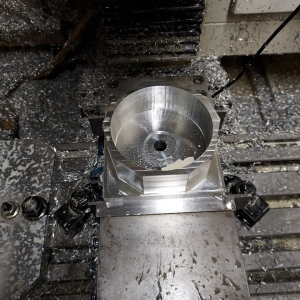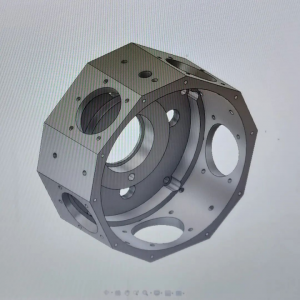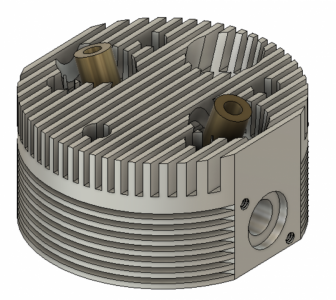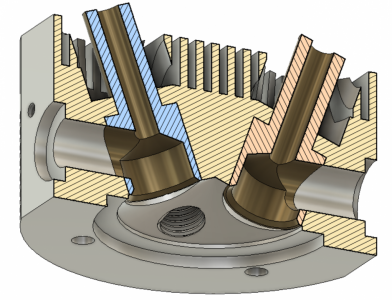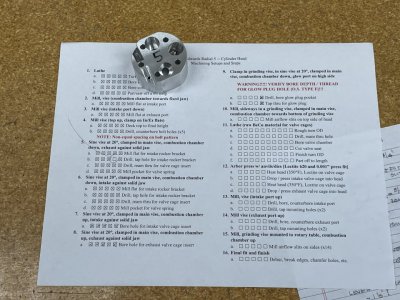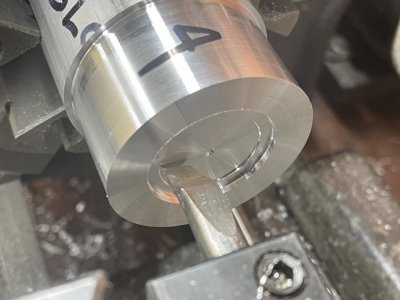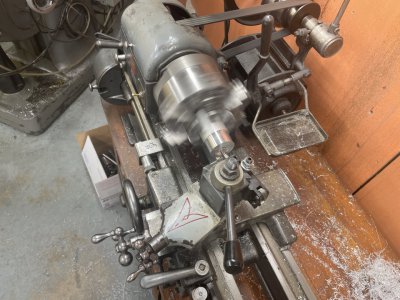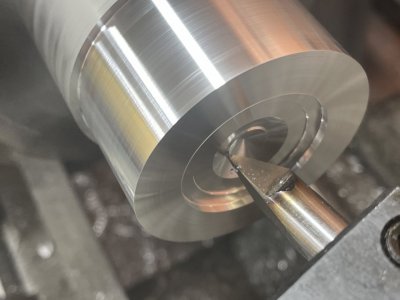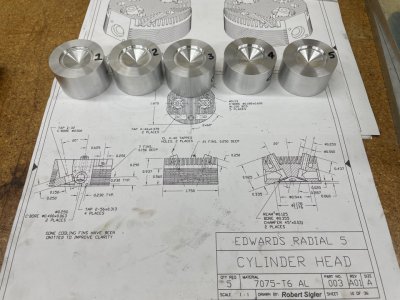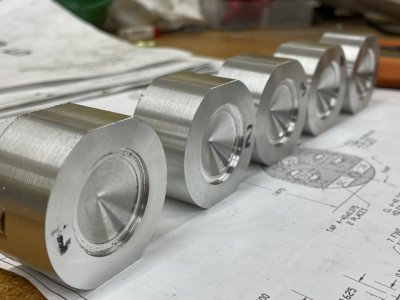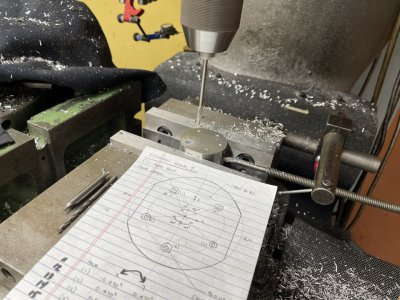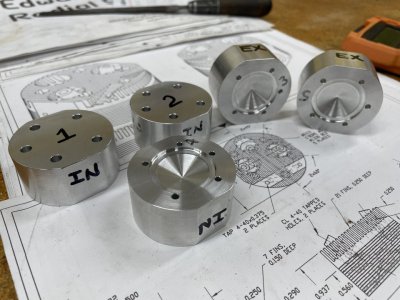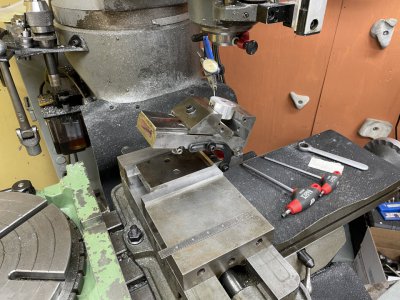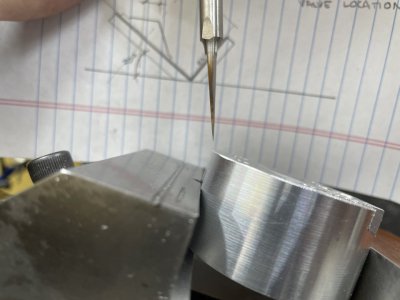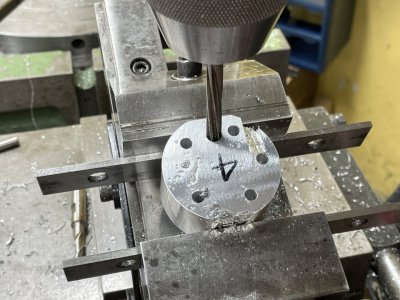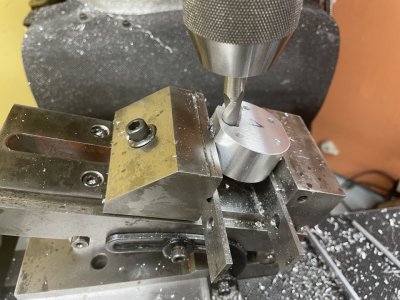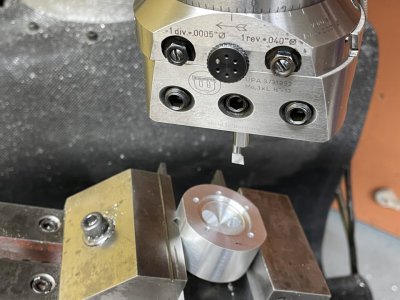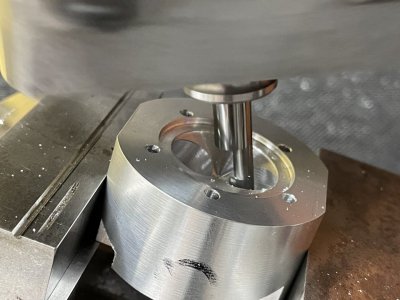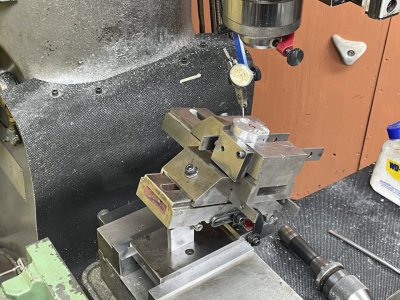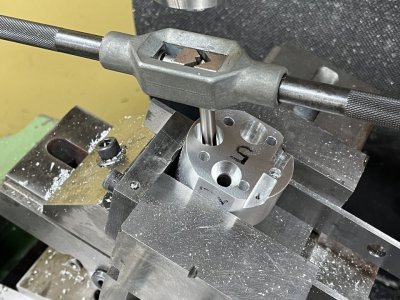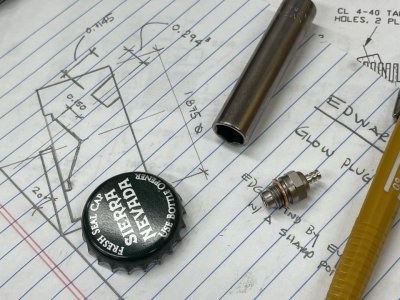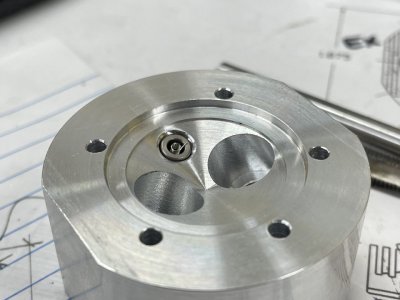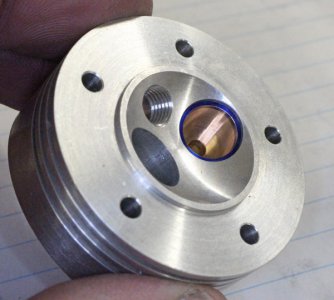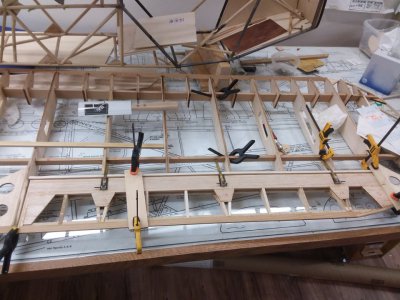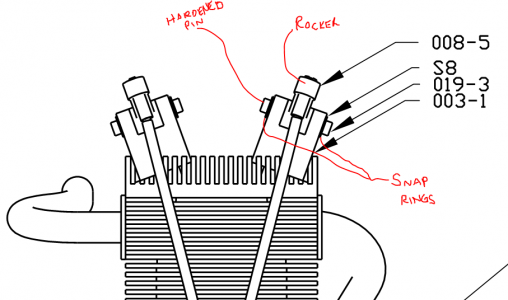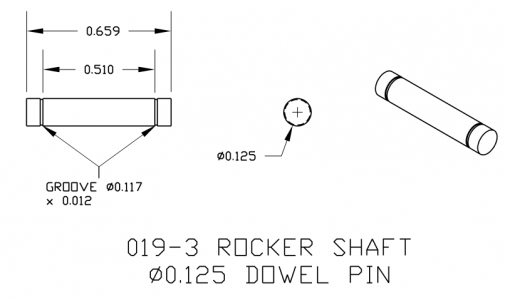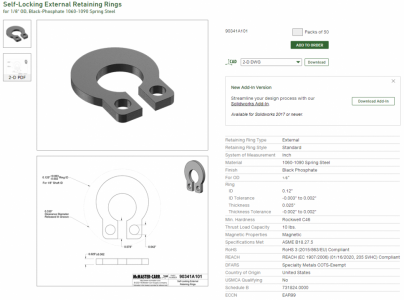Episode 16.2 || Cylinder Heads (part 2)
Continued from last post…
Setup #10: Clamp the head in a grinding vise, and clamp that grinding vise standing up in my main milling vise. Mill the airflow slots in the top of the head using a 40-thou slitting saw. I took the full 250-thou depth in one pass. Can’t do any more on the heads at this point until the valve cages are machined and installed.
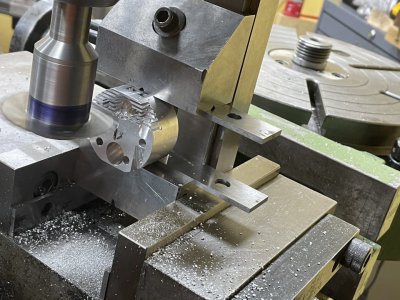 Setup #11:
Setup #11: Back to the lathe, now with some Beryllium Copper** chucked up for the valve cages. Turned the rough overall OD, then finish-turned the stem to a hair under 0.250” so it can slip through the reamed hole in the head. I used a hacksaw to part the valve cages off. I do this often, even though some people say not to. Lathe is off and a piece of wood is down to protect the ways if I cut through unexpectedly. This stuff turns EXCEPTIONALLY well and takes a very good surface finish. Nice, smooth, long strings that are easy to cleanup. The chips are reminiscent of aluminum, but with some of the ‘crunchiness’ of brass. I used a sharp HSS cutter.
**I know, I know. People say this stuff is toxic. The internet tells me that only the dust is toxic, and I wasn’t creating any dust, so lay off.
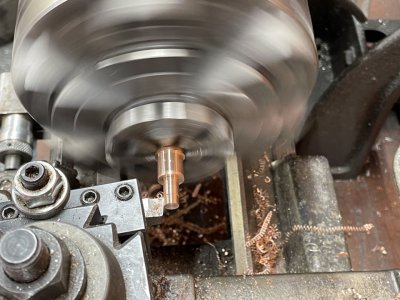 Setup #12:
Setup #12: Flip the parts around, hold them in a 1/4” collet, and turn them down to the correct length. The critical length here is the length of the larger OD portion of the cage, as that has to nestle down into the bored pocket in the head. 0.3975 is what I was shooting for -- nailed it.
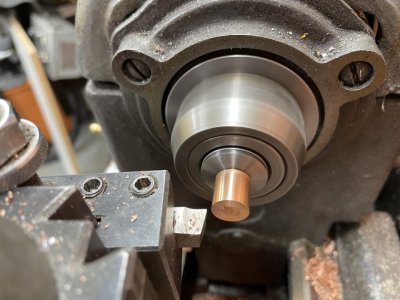
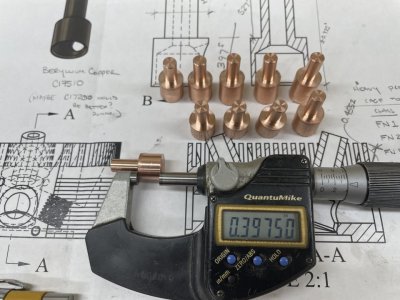 Setup #13:
Setup #13: Back in the 1/4” collet on the lathe -- drill, ream, counter-drill (is that a word?) the internal features. Then with the compound swung over to 45 degrees, cut the valve seat. Note that I wasn’t all that worried about getting the angle exactly at 45 degrees; the valves themselves will also be cut at 45 degrees, but I’ll lap each of them in to the mating valve seat. A 0.125” gage pin fits perfectly in the 1/8” reamed hole with no slop, as it should.
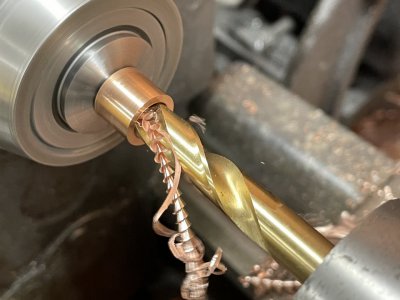
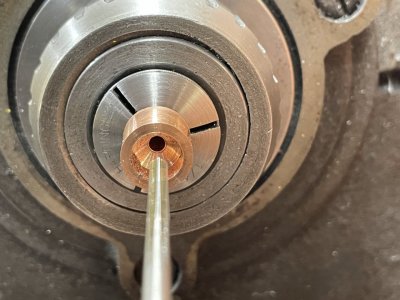
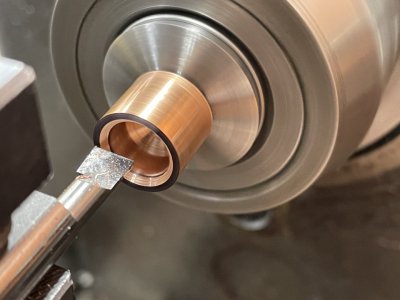
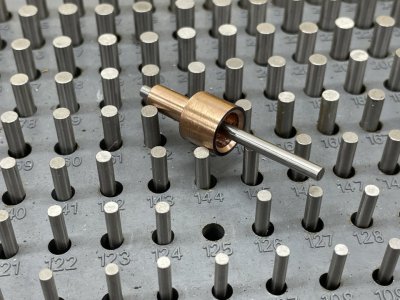
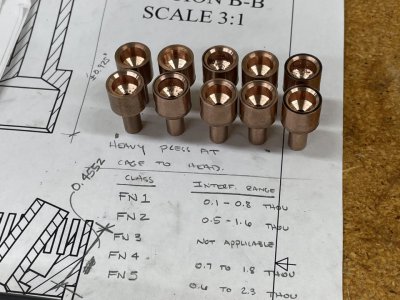 Set up for Setup #14:
Set up for Setup #14: Take careful measurements of the valve cage pockets that are bored into the heads. I really, really like the split-ball bore gages. The one I’m using here is a Starrett 82B. I calibrated it to read 0 at a bore of 0.426”, and made sure to check that my micrometer read the same when measuring over the gage blocks. As I said earlier, I’m shooting for a 1 thou interference fit here, plus the use of Loctite 620. Hopefully that’ll be sufficient to keep them in place, I expect that it will.
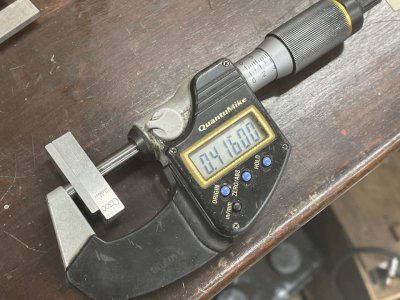
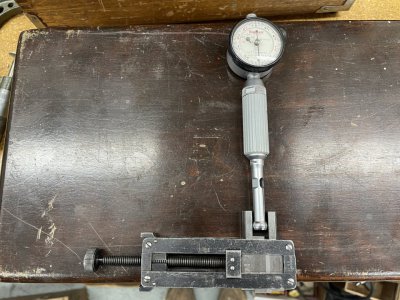
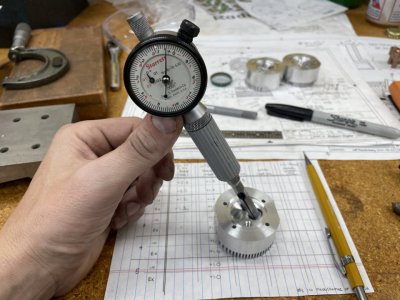
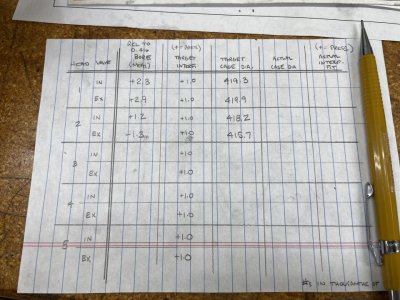 Setup #14:
Setup #14: Back in the 1/4” collet on the lathe. Finish turn the OD to the appropriate dimension. Each is tailored to the valve pocket for which it’s destined. I left a few tenths on each of them and finished them off with some emery paper to get them to size. I ended up within about 1 or 2 tenths on all of them. NICE!
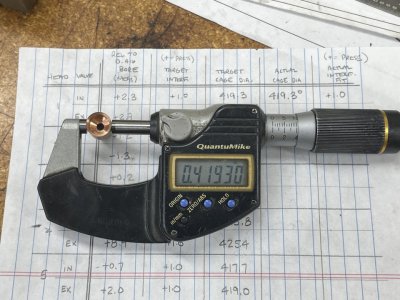
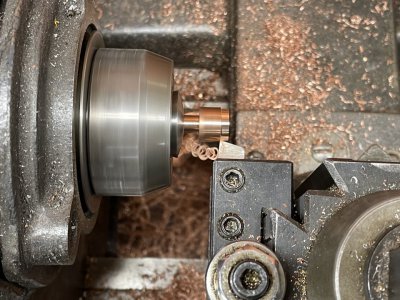 Setup #15:
Setup #15: I heated up the aluminum heads in the oven set to 450F (which is the rated temperature for Loctite 620), at which temperature the valve cage bores should grow by about 3 thou. Should be good enough to overcome the nominal 1-thou interference between the beryllium copper valve cages and their bores in the aluminum heads. After letting the head soak in the oven for 15 or so minutes, I spread some Loctite 620 on the valve cage, pulled the head out of the oven, and dropped/pushed in the cage. One valve cage at a time, no time for doing both without re-heating the head. Ideally I’d have the arbor press at the ready just in case, but our oven is in the kitchen and, well, my arbor press is not. Several of them were total disasters: I was too slow (I had to burn off the Loctite 620 with a propane torch to get the valve cages out). If I were to do it again, I would use a 2ish thou clearance fit instead of an interference fit; Loctite say that 620 can fill annular spaces of up to about 8 thou.
I didn’t take any pictures here. But trust me, it was a bit of a disaster.
Setup #16 & #17: I drilled /counterbored the intake and exhaust ports with an end mill. Then drilled / tapped the holes to bolt on the intake/exhaust headers. I used an endmill for the 1/4” through-hole because of the inclined interface between aluminum and beryllium copper.
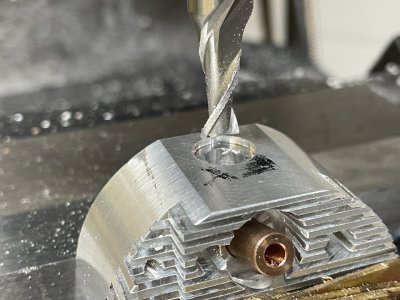
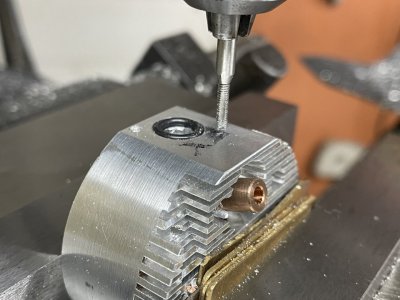 Setup #18:
Setup #18: The last step was to mill the remaining cooling fin slits. I was planning on doing this over at the rotary table, but it was easier to just use the (very) modest 2-axis CNC capabilities of my Bridgeport EZ Trak. I used the same 40-thou slitting saw as before.
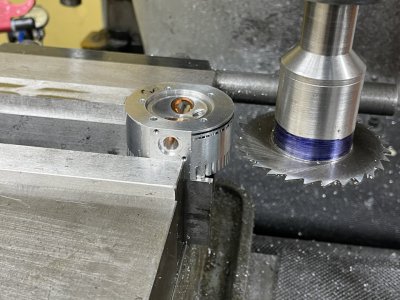
Et voila, c’est fini!!! That was a long one!
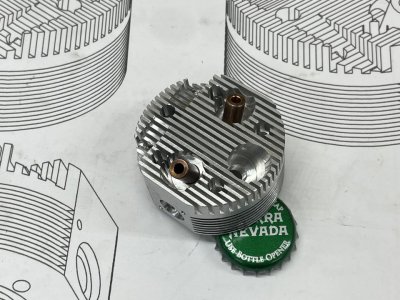
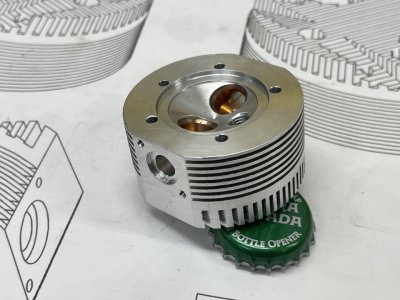 Side notes:
Side notes:
1) I’ve only finished one of the heads. The remaining heads still need the slits done. I was antsy to get an update published here because it’s been so long.
2) I can’t seem to find one of the heads. I’m really, really crossing my fingers for it to turn up one of these days. I’d hate to have to make a new one.
I’ll hopefully post another few photos in the coming days of my overall progress so far. It really is coming along. I’ve got finishing this motor on my 2022 to-do list.
TIME ON CYLINDER HEADS: 61 hours
CUMULATIVE TIME: 329 hours
